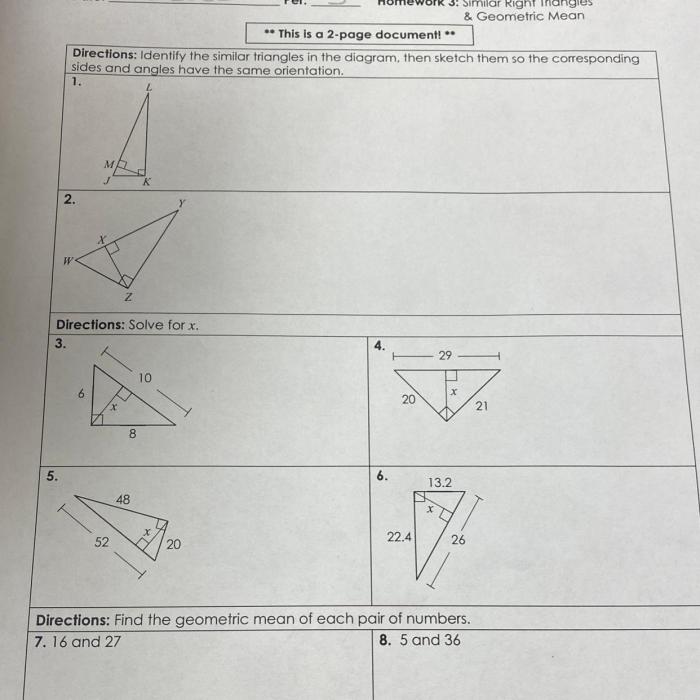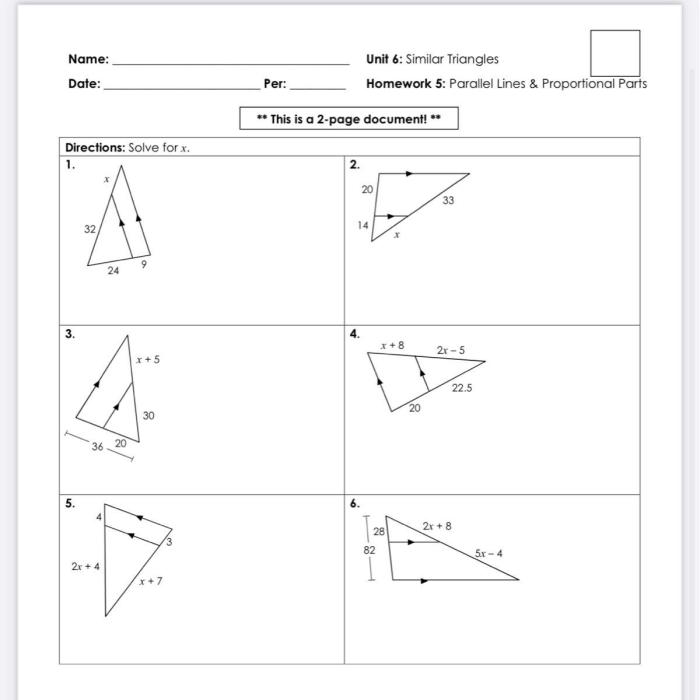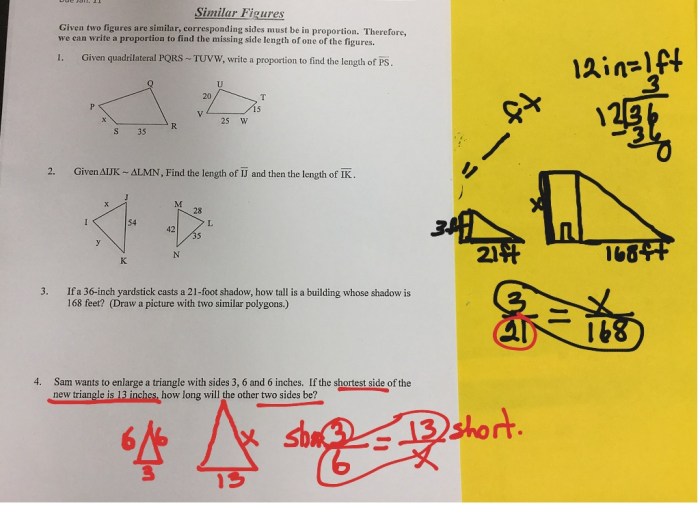Introducing the ‘Similar Figures Homework Answer Key’, an invaluable resource designed to empower students in comprehending the intricacies of similar figures. This comprehensive guide delves into the fundamental concepts, properties, and applications of similar figures, providing a solid foundation for academic success.
Within this meticulously crafted document, you will discover a wealth of knowledge, including real-world examples, problem-solving techniques, and a comprehensive list of frequently asked questions. Embark on an enlightening journey as we unlock the secrets of similar figures together.
Similar Figures
Similar figures are figures that have the same shape but not necessarily the same size. They are related by a scale factor, which is the ratio of the corresponding side lengths of the figures.
For example, a square and a rectangle are similar figures because they have the same shape (four sides and four right angles). However, the square has equal side lengths, while the rectangle has different side lengths. The scale factor between the square and the rectangle is the ratio of the side length of the square to the side length of the rectangle.
Properties of Similar Figures, Similar figures homework answer key
- Corresponding angles are congruent.
- Corresponding side lengths are proportional.
- The ratio of the areas of similar figures is equal to the square of the scale factor.
- The ratio of the volumes of similar figures is equal to the cube of the scale factor.
Homework Answer Key

Question 1: Determine if the following figures are similar. Explain your reasoning.
- A square and a rectangle
- A circle and an ellipse
- A triangle and a trapezoid
Answer:
- Yes, because they have the same shape (four sides and four right angles).
- Yes, because they have the same shape (an oval with two axes of symmetry).
- No, because they have different shapes (a triangle has three sides and three angles, while a trapezoid has four sides and two parallel sides).
Question 2: Find the scale factor between two similar figures if the ratio of their corresponding side lengths is 3:5.Answer:The scale factor is 5/3.Question 3: If the area of a square is 16 square units, what is the area of a similar square with a scale factor of 2?Answer:The area of the similar square is 64 square units.
Applications of Similar Figures
Similar figures have many applications in real-world problems.
- Architecture:Similar figures are used to create scale models of buildings and other structures.
- Engineering:Similar figures are used to design bridges, airplanes, and other structures that need to be strong and efficient.
- Art:Similar figures are used to create paintings, sculptures, and other works of art that are proportional and harmonious.
Resources for Learning About Similar Figures

| Resource Type | Description |
|---|---|
| Website | Khan Academy: Similar Figures |
| Book | Geometry for Dummies by Mark Ryan |
| Video | Crash Course: Similar Figures |
Visual Representations of Similar Figures

The following diagrams illustrate the concept of similar figures:
- Square and rectangle:Two figures with four sides and four right angles, but different side lengths.
- Circle and ellipse:Two figures with an oval shape and two axes of symmetry, but different eccentricities.
- Triangle and trapezoid:Two figures with three sides and three angles, but different shapes (triangle has three straight sides, trapezoid has two parallel sides).
Quick FAQs: Similar Figures Homework Answer Key
What are similar figures?
Similar figures are geometric shapes that have the same shape but not necessarily the same size. They have corresponding angles that are congruent and corresponding sides that are proportional.
How can I use similar figures to solve problems?
Similar figures can be used to solve problems involving scale, proportions, and area. By setting up ratios of corresponding sides, you can determine unknown measurements or solve for missing information.
What are some real-world applications of similar figures?
Similar figures are used in architecture, engineering, art, and many other fields. They allow us to create scale models, design structures, and understand the relationships between objects of different sizes.